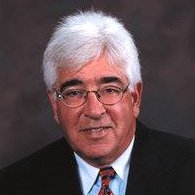Have I Got A Deal For You!
November 21, 2011
 My wife was shopping in Macy’s the other day and was intrigued when she overheard a senior management person asking two employees what their sales goals in dollar totals were for that day.
My wife was shopping in Macy’s the other day and was intrigued when she overheard a senior management person asking two employees what their sales goals in dollar totals were for that day.
Setting realistic hourly and daily production goals is something that I advise my clients to do at the morning huddle. That just makes good economic sense, because there are only a limited number of hours in a day when you have the confluence of staff, high-speed suction, compressed air and patients .
But in my opinion, it is a mistake to think of these goals in terms of individual staff members reaching some kind of daily “sales” quota. That is too transparent and could easily be perceived by the patient as “selling”. Remember that people like to buy, but they don’t necessarily like to be sold. A better approach — a more laid-back approach — is to focus on having a plan that reinforces your agreed-upon criteria or standards of clinical excellence and great customer service. Then encourage each staff member to be an unabashed spokesperson for those standards.
Thus everyone should look for opportunities to share information with patients about new and exciting clinical advances in your practice like invisible braces, non –surgical periodontal treatments, in-office whitening, and one visit crowns. Talk up your e-mail blast capabilities, blog posts, your website, and Facebook participation that enhances the way your practice connects with your patient base.
Be totally interested in your patients. Inquire about their family members and what is going on in their lives. The goal, whenever you engage them in conversation, is to make that patient feel that when they are in your office, they are the most important person in the universe. Making your patients feel special is a talent and will differentiate you from your competition.
Sales training 101 says to concentrate on building a solid relationship with your prospect. Once they like you and trust you, the sale is easy. An understated but consistent approach to selling dentistry works way better than high intensity used-car salesmanship. So while that Macy’s employee may only see dollar signs when asked about his or her goal, let’s make sure that our staff sees beyond the dollar signs to excellent customer service which when done correctly translates into a more profitable office.
Avoiding the Pitfalls of Dental Practice Transitions – Part Seven
November 8, 2011
My last few blog posts have discussed the details of practice acquisitions where the retiring doctor (seller) is out of the practice from day one of the sale. Here is another twist on a practice sale where the selling doctor – perhaps two to three years away from retirement – stays on as an associate but merges his practice into the buyers location.
The list of benefits to the seller’s patient base might include the following: that with this move there will be better coverage; it is a better location with updated technology; perhaps better parking; I (the selling doctor) was having trouble negotiating the terms of a new lease arrangement and this is a great opportunity, etc. The acquired doctor “appears” to just move his location, but in reality he has sold the practice. This is what I call a “below the radar” transition because to the community at large and to the patients, nothing other than the location has changed.
The selling doctor’s name is on the door and the letterhead. He continues to see and treat all of his own patients, including hygiene checks. Initially – space permitting – he works the same schedule with the same hours. All of his staff — or most of them — come over in the transition. But the seller no longer shares in the hygiene revenue of his patients, and is paid a percentage of his own production or collections. That revenue is how the buyer leverages the purchase so that this sale can happen with bank financing and the buyer never takes any money out of his own pocket.
The advantages of this transition from the perspective of the seller is that the seller receives maximum value in a lump sum payment for his practice, yet still has the opportunity to continue to work and earn money, continue to make contributions if he wishes to a pension plan, and do all of this with no administrative responsibilities. The advantage to the buyer is that when the selling doctor eventually retires, all of his patients are used to coming to the new location and will of course remain.
This is a wonderful win/win situation that I have had the opportunity to facilitate many times. I feel it is worth your consideration.

